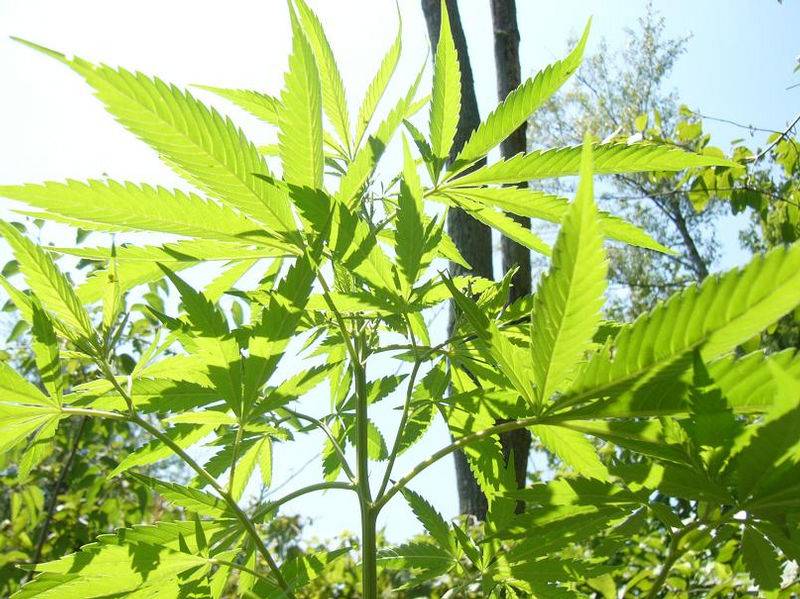This is a collection of cannabis research. Please feel free to post cannabis related articles or other research.... 
Lets get some reading material together... Plenty of time to pass this winter....
A chemotaxonomic analysis of cannabinoid variation in Cannabis (Cannabaceae) -- Hillig and Mahlberg 91 (6): 966 -- American Journal of Botany
http://www.amjbot.org/cgi/content/full/91/6/966
--------------
Inheritance of Chemical Phenotype in Cannabis:
http://www.genetics.org/cgi/reprint/163/1/335.pdf
---------------------
Non-acute (residual) neurocognitive effects of cannabis
use: A meta-analytic study
http://www.hnrc.ucsd.edu/publication...348art2003.pdf
"The results of our meta-analytic study failed to reveal a
substantial, systematic effect of long-term, regular cannabis
consumption on the neurocognitive functioning of users
who were not acutely intoxicated."
--------------------
CANNABIS 2002 REPORT
Ministry of Public Health of Belgium
A joint international effort at the inititative of
the Ministers of Public Health of Belgium, France, Germany,
The Netherlands, Switzerland.
Technical Report of the International Scientific Conference
Brussels, Belgium, 25/2/2002
http://www.trimbos.nl/Downloads/Engl...002_Report.pdf
-------------------------
VAPORIZATION AS A SMOKELESS CANNABIS DELIVERY SYSTEM:
A PILOT STUDY
http://www.cmcr.ucsd.edu/geninfo/abrams_vap_abs_1.pdf
-------------------------
THC degredation:
https://www.icmag.com/ic/showthread.php?t=47174
---------------------------
NAIHC - North American Industrial Hemp Council
A Renewable Industrial Fiber & Oil Crop
Dr. Paul G. Mahlberg's Cannabis Research
http://www.naihc.org/MahlbergArticles.html
-----------------------
http://www.cannabis-med.org/studies/study.php
-------------------
http://www.unboundmedicine.com/medli...additional=thc
----------------------





PDF-- https://www.icmag.com/ic/attachment.php?attachmentid=1712&d=1234922382


Lets get some reading material together... Plenty of time to pass this winter....

A chemotaxonomic analysis of cannabinoid variation in Cannabis (Cannabaceae) -- Hillig and Mahlberg 91 (6): 966 -- American Journal of Botany
http://www.amjbot.org/cgi/content/full/91/6/966
--------------
Inheritance of Chemical Phenotype in Cannabis:
http://www.genetics.org/cgi/reprint/163/1/335.pdf
---------------------
Non-acute (residual) neurocognitive effects of cannabis
use: A meta-analytic study
http://www.hnrc.ucsd.edu/publication...348art2003.pdf
"The results of our meta-analytic study failed to reveal a
substantial, systematic effect of long-term, regular cannabis
consumption on the neurocognitive functioning of users
who were not acutely intoxicated."
--------------------
CANNABIS 2002 REPORT
Ministry of Public Health of Belgium
A joint international effort at the inititative of
the Ministers of Public Health of Belgium, France, Germany,
The Netherlands, Switzerland.
Technical Report of the International Scientific Conference
Brussels, Belgium, 25/2/2002
http://www.trimbos.nl/Downloads/Engl...002_Report.pdf
-------------------------
VAPORIZATION AS A SMOKELESS CANNABIS DELIVERY SYSTEM:
A PILOT STUDY
http://www.cmcr.ucsd.edu/geninfo/abrams_vap_abs_1.pdf
-------------------------
THC degredation:
https://www.icmag.com/ic/showthread.php?t=47174
---------------------------
NAIHC - North American Industrial Hemp Council
A Renewable Industrial Fiber & Oil Crop
Dr. Paul G. Mahlberg's Cannabis Research
http://www.naihc.org/MahlbergArticles.html
-----------------------
http://www.cannabis-med.org/studies/study.php
-------------------
http://www.unboundmedicine.com/medli...additional=thc
----------------------
PDF-- https://www.icmag.com/ic/attachment.php?attachmentid=1712&d=1234922382





